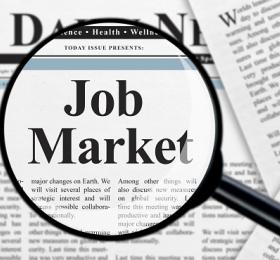
September 6, 2024
August jobs were better than what we saw in July, but that isn’t saying much! US payrolls expanded by 142,000 last month and July’s figures were revised even lower by 25,000. These revisions mean Q3 began with job creation totaling a mere 89,000. The official unemployment rate actually ticked down a hair to 4.2% in August as hourly earnings surprised to the upside (0.4% MoM). However, U6, a broader measure of unemployment, is moving dangerously close to the 8% threshold (a level last breached during the pandemic). Today’s report from the Bureau of Labor Statistics prompted a swift response from none other than John Williams, president of the New York Fed. Mr. Williams highlighted the risks to the labor market and suggested that “maximum employment” is just as important to the Fed as “price stability” at this point in the cycle. Please keep in mind maximum employment and price stability are the two components that make up the Federal Reserve’s dual mandate from Congress. We have entered a new phase with respect to monetary policy.
As we enter the final month of Q3, the US economy remains on solid footing. The labor market is without question cooling as demand tapers below 8M (July JOLTS ~7.7M). Moreover, there is roughly one job opening for each unemployed person in the US. Remember when that ratio was >2? It wasn’t that long ago, and things have become much more “normal” in Laborland since we began to approach the 1:1 threshold. Broadly speaking, inflation is behaving itself, though the average American household might have some trouble believing it. According to the University of Michigan, 1-year inflation expectations at the consumer level are currently running at 2.8%. Interestingly, this survey came after the release of some very encouraging July PPI, CPI, and PCE data. In sum, the Fed can now begin to unwind its “restrictive” policy, but Mr. Powell should take care not to overdo it! In all likelihood, the first step in that direction will occur on September 18. We must be mindful that, while slack is building in certain areas of the domestic economy, American consumption remains strong. We will take a quick look at a few data points to quickly illustrate.
American productivity is on the rise with unit labor costs declining. This bodes well for real GDP as we enter the fall and winter months of 2024. We would also point out that the pricing component among US service providers and manufacturers suggests ongoing upward price pressures (ISM data)—not ideal for a Fed considering the magnitude and pace of easing. Sifting through the various reports, we find that the employment and new orders indices within the non-manufacturing sector indicate a return to expansion for the 2nd consecutive month— there was a brief summertime dip into contraction territory. We are a services-driven and consumer-dependent economy, so all of this isn’t a bad sign economically speaking. However, these dynamics do present some unique challenges for Mr. Powell in terms of navigating the contours of the economy and calibrating appropriate monetary policy going forward. Of course, the trajectory of monetary policy tends to have an outsized impact on financial markets. So, we will be keeping a close eye on the incoming data and our ears open as we approach this critical policy juncture.
Perhaps the biggest question is: where does the Fed think the neutral rate for the economy really is? Remember “neutral” or “R-star” is the rate of interest at which the economy is neither expanding nor contracting. Of course, we have our own thoughts on that! BUT for purposes of the upcoming meeting of monetary minds… we expect a data-dependent approach from the Federal Reserve with noncommittal forward guidance at its September FOMC meeting— 25 bps is in the cards. The Fed should not rock the boat (one way or the other) at this stage. Policy is always a difficult balancing act.
News Release: Bureau of Labor Statistics (The Employment Situation- August 2024)